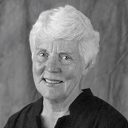Susan Q. Stranahan profiles “Father of Earth Day” Denis Hayes to find out why he is challenging more philanthropists to take greater risks.
For more than half a century, Denis Hayes has been an environmental activist, changing job titles but never mission. That experience has given him the rarest of perspectives on identifying needs, building coalitions, and cultivating leadership. It has also earned him a reputation for frequently asking “Why?” but more often asking “Why not?”
In his view, his colleagues in the philanthropic community are too cautious. “The whole reason for foundations to exist is to underwrite risk — to experiment with things that government can’t do and that the private sector won’t touch,” he says in a recent conversation. “Yet most are very risk-averse in their investment philosophies and grant-making.”
“I look for the philanthropists who do things that are daring,” he continues. He counts himself among them.
As he prepares to wind down a long career of activism, the man who inspired millions around the world to think and act globally about the health of the planet now works from a hyper-local platform, but one with an equally ambitious goal: to shape an environmental movement that is diverse, addresses long-standing issues of social inequity, and achieves an impact that benefits everyone.
“The local level is where things endure,” says Hayes.
Working at the local level — in terms of identifying community needs, mentoring young leaders, and supporting solutions — delivers tangible, lasting results. Denis Hayes
Building a Local and Urban-Focused Environmental Movement
Since 1992, Hayes has served as president of the Bullitt Foundation, a Seattle-based philanthropy established to address environmental and social justice issues in the Pacific Northwest, and more recently in just three cities: Seattle, Portland, Oregon, and Victoria, British Columbia.
The decision to shrink was a pragmatic one. Working at the local level — in terms of identifying community needs, mentoring young leaders, and supporting solutions — delivers tangible, lasting results. “You’re in there getting dirt under your fingernails,” explains Hayes. “You know whether you’re succeeding or not.”
Although relatively small in terms of assets (US$ 54m), the foundation has “played an outsized role in shaping the regional environmental agenda,” according to The Seattle Times. Hayes is credited with serving as the catalyst, and for guiding Bullitt’s vigorous engagement with communities of color.
The foundation has announced it will end its grant-making in 2024. At that time Hayes will also retire from a career that began in 1970. Back then, as a restless Harvard graduate student, he leaped onto the national stage as the principal organizer of the first Earth Day, a celebration that propelled the environmental movement into a global political and social force. In 1990, under his leadership, Earth Day became an international event, and is now observed in nearly 200 countries.
Hayes relocated to Seattle two years later, frustrated by the successful efforts of lobbyists and regulators to blunt transformative environmental laws. “It seemed there was too great a remove from what we worked so hard to get Congress to pass and what was actually happening on the ground,” he recalls, adding that at the local level, “political leaders are just folks. They have a better sense of the feeling of the community and they’re more responsive to it. Joe Biden doesn’t return my phone calls, but we’ve never had a mayor of Seattle who wouldn’t return my calls.”
Engaging Communities of Color
Hayes is particularly proud of the early role the Bullitt Foundation played in the creation of the Portland Clean Energy Fund, a municipal bond initiative, approved by city voters in 2018. The fund, financed by a surcharge on large Portland retailers, distributes between US$ 40m to US$ 60m annually to equitable finance investments in renewable energy, job training, and green infrastructure.

The Portland Clean Energy Fund received enough valid Portland voter signatures to qualify for the November 2018 ballot.
The idea for, the popular momentum behind, and the triumph at the ballot box was the handiwork of a coalition of organizations often overlooked and underrepresented in local planning, but those with most at stake in environmental inequality and social injustice. They include Portland’s diverse communities of color.
Bullitt’s involvement began several years before the ballot initiative as part of the foundation’s heightened focus on diversity, initially among its own staff and then among the leadership of organizations receiving Bullitt’s financial support. “After a period of time it became clear that while this was producing some results, they were relatively modest,” recalls Hayes. To produce meaningful change, a new approach was required.
“We started looking for local organizations that were set up by people of color, typically groups that had really no involvement in what we might think of as environmental issues. They were working for immigration reform, crime reduction, or better housing. They were effective at what they did and were respected in the community. We talked with them about whether there were any environmental issues that they were also interested in but that they didn’t have the necessary [financial] support to go after.” Their answer was yes.
Environmental inequities existed among Portland’s Black, Indigenous, Latino, and Asian American communities. With funding from Bullitt, the Coalition of Communities of Color, an umbrella organization, hired Maggie Tallmadge, a young advocate, to ensure that these underserved populations had a seat at the table alongside mainstream environmental organizations as the city’s clean energy plan was formulated. At the outset, Tallmadge discovered, even the choice of wording proved to be a challenge.
“There was a huge gap between how each group defined ‘sustainability,’” says Tallmadge, who is a citizen of the Cherokee Nation. “Our communities historically had been left out of sustainability discussions. When investments did come to our communities, they would usually result in gentrification and the loss of affordable housing.”
Bullitt’s initial grant of US$ 40,000 (to underwrite Tallmadge’s position) proved pivotal. “Getting that funding early brought in other foundations,” says Tallmadge. “And it encouraged other environmental philanthropies and foundations to focus on communities of color and to recognize the incredible disparities that existed.”
Ultimately, Bullitt would commit more than US$ 400,000 to the Coalition of Communities of Color, and a total of about US$ 1.7m over six years to other local organizations representing the city’s diverse populations. The Portland Clean Energy Fund has been heralded as a national success story in part because of its inclusiveness.
The Small Potatoes Model
The Portland Clean Energy Fund proved to be a major local accomplishment for Bullitt. In terms of impact, however, Hayes readily admits that the foundation’s contribution to addressing global environmental and social justice inequities is “very small potatoes.”
“You can do an enormously successful job in a city like Portland or Seattle,” he says. “In the grand scheme of things, it’s not noticeable at the planetary level.” But if direct impact is a critical measure of success, shouldn’t “small potatoes” become a model for more social investors?
In Hayes’ view, the world of philanthropy needs a broad spectrum of funders. “Different people have different interests, and I always encourage people to do the things that resonate for them. For us, it has been sometimes frustrating and sometimes deeply rewarding to get something done. If we get it done, we honest to God know what’s happening, how the money’s being spent, what the on-the-ground consequences are, how many jobs were created and who went into those jobs.”
Many ultrawealthy social investors prefer to play on the “planetary level,” he acknowledges. “I’m very happy seeing them put their money into these national and international efforts.” But he is worried about the expanding role of mega-donors within the philanthropic community. That infusion of money, he believes, carries with it an obligation to ensure that the funding is targeted with planning and precision.
Hayes identifies as his role models for social investing Jeff Skoll of the Skoll Foundation and philanthropists Tom Steyer and Kat Taylor. “They’re innovative and willing to take serious chances. They link their philanthropy with their impact investing, their political donations — and they come back with a menu of things to try to achieve something.”
What appeals most to Hayes about these strategies is a readiness to take risks. That’s not surprising coming from someone who, a half-century ago, gambled that a day to celebrate Mother Earth could launch a movement. The standard that guides these investment choices is the standard he’s used for his own. “It’s innovative and some of it’s not going to work.” But, in his view, it’s remarkable for one reason: “It’s daring.”
Susan Q. Stranahan
Susan Q. Stranahan is a journalist who has written about the environment and energy since the 1970s. She is a former reporter and editorial writer at the “Philadelphia Inquirer,” and was part of the team awarded the Pulitzer Prize for coverage of the Three Mile Island nuclear accident. She is the author of “Susquehanna, River of Dreams,” an environmental history of the river, and co-author of “Fukushima: The Story of a Nuclear Disaster.” She has written for a variety of national publications. She lives in Maine.
Denis Hayes
Denis Hayes is a longtime environmental activist and president of the Bullitt Foundation, a philanthropy funded with proceeds from the sale of the King Broadcasting Company. Among many other achievements, the Bullitt Foundation designed and constructed the Bullitt Center, the world’s greenest office building. He was the principal national organizer of Earth Day, now the most widely observed secular holiday in the world. During the Carter administration, he directed the federal Solar Energy Research Institute, now the National Renewable Energy Laboratory. He has served on the faculties of Stanford University and University of California Santa Cruz, and sat on the governing boards of dozens of social and environmental organizations.
This article was originally published in Social Investor magazine, a publication by Chandler Foundation looking at the challenges of social impact, featuring insights from a diverse range of social change leaders.







Comments (0)